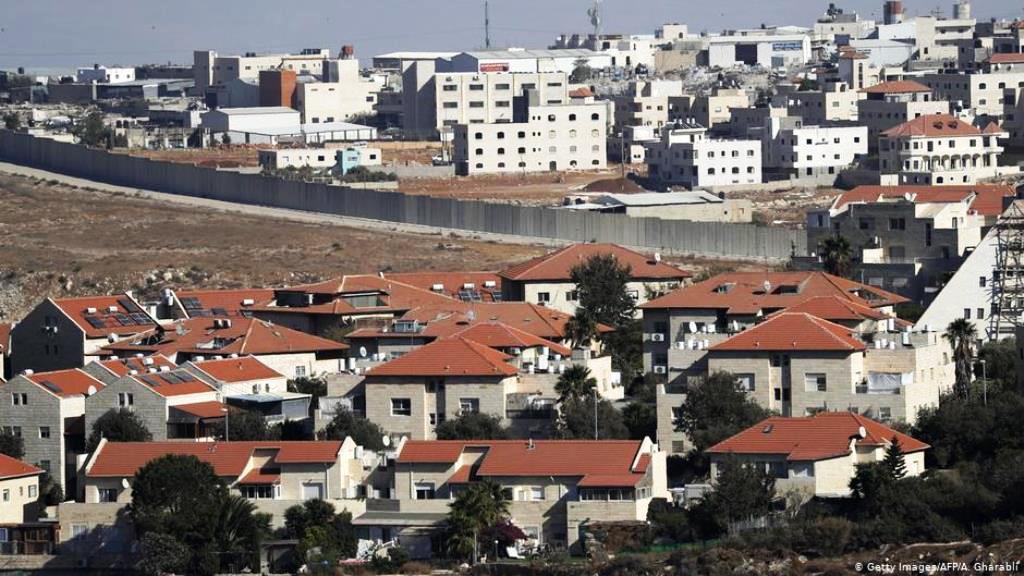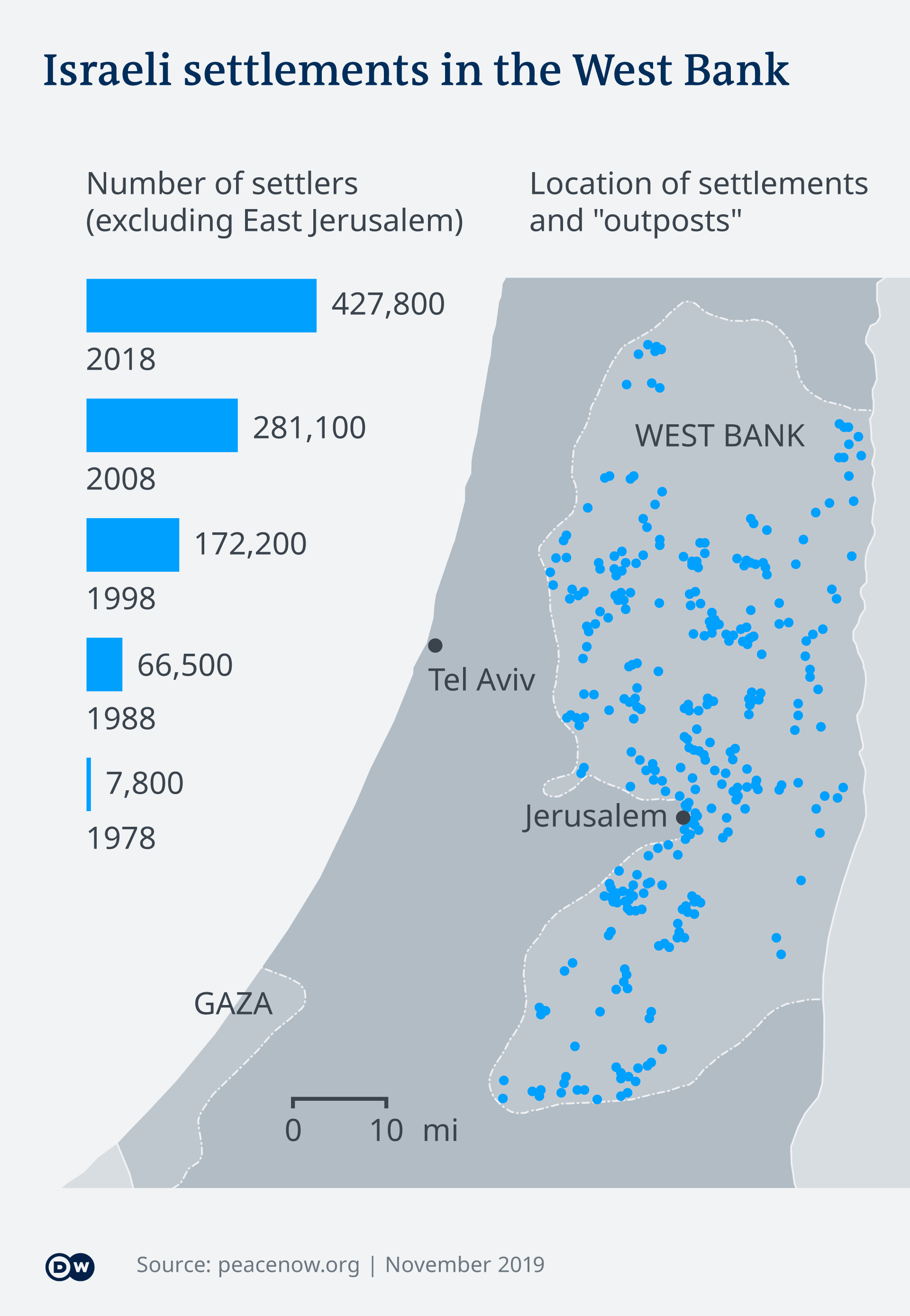Israeli highways – a fast track to West Bank annexation

The international community was hugely relieved this summer when Israel shelved its plan to swallow up parts of the occupied West Bank with the approval of U.S. President Donald Trump. Israel's normalisation agreements with the United Arab Emirates were higher up Prime Minister Benjamin Netanyahu's priority list. And anyway, there is no chance of a de jure annexation with U.S. President-elect Joe Biden.
However, this relief now seems to have been premature. After all, what is currently being planned by Israel's relevant authorities practically boils down to a long-term annexation plan.
It's no accident that the nationalist right-wing camp in Israel hopes to increase the number of settlers in the West Bank from its current level of 440,000 to one million over the course of the next 20 years. According to a recent report published by left-wing non-governmental organisations, the intention is that a master plan for road and transport development until 2045, recently presented by Transport Minister Miri Regev, will create the necessary infrastructure for the implementation of this plan. According to the NGOs behind the report, this master plan has two main objectives: firstly to create high-speed links between even remote settlements and the Israeli heartland and secondly, to all but fragment the Palestinian territories.
According to the report, which was researched and published by the anti-occupation veteran soldiers' group "Breaking the Silence" and the "Israeli Center for Public Affairs", both objectives will "together contribute to further cementing the reality of one state with unequal rights". The title of this detail-packed report is "Highway to Annexation".
Transport Minister Miri Regev's own words prove that this is no malicious accusation. In the application for €100-million in funding for the construction of four expressways in the first phase of the three-phase master plan, the minister, who is a close ally of Netanyahu, wrote "We will not take our foot off the pedal. We believe in de facto sovereignty and will connect Israel, including Judea and Samaria" – in other words the West Bank.

Road construction and settlement expansion go hand in hand
Just a few facts and figures make it clear what is behind this plan. Some 60 percent of settlers work in Israel, which means that they have to commute on a daily basis. A commute such as this is time-consuming, especially if you live on a distant hill in the West Bank. Only settlements like Ariel, Beitar Illit, Maale Adumim or Modiin Illit have developed into real satellite towns with tens of thousands of inhabitants. From these settlements, residents can take multi-lane highways that bring them to their places of work in Greater Tel Aviv or Jerusalem in less than half an hour.
Road construction and settlement expansion go hand in hand. Just how true this is is illustrated by Nokdim, home of Avigdor Lieberman, the head of Israel's right wing party Israel Beitenu (Israel our Home).
Nokdim, a small settlement to the south east of Bethlehem, grew by 90 percent within just eight years thanks to a by-pass that spared residents a bumpy ride on the road through Palestinian towns and villages. Since the 1990s, when the construction of such by-passes began in the wake of the Oslo Accords, the total number of settlers in the West Bank has increased fourfold.
Ultra-orthodox settlers
Half of the new settlers are ultra-orthodox Jews. Just like the strictly devout Jews, secular Israelis have thus far preferred to settle in the settlement blocs close to the heartland. "But these conurbations do not play a major role in achieving the strategic goal of preventing a two-state solution," says Jehuda Shaul, co-founder of "Breaking the Silence" and one of the co-authors of the report. After all, the possibility of an exchange of territory – the settlement blocs would go to Israel, while the Palestinian side would get substitute land elsewhere – has already been discussed in a variety of negotiations.
It is the Israeli settlement colonies spread over the West Bank – of which there are well over one hundred – that stand in the way of a solution. But with the exception of the religious nationalist ideologues, who will go to great lengths to settle the "Biblical land", who wants to move to places like Emanuel, Itamar or Shilo? The master plan aims to make the location of these settlements more attractive in order to encourage as many ultra-orthodox Jews as possible to the farthest flung corners of the West Bank.
This is why in addition to turning Route 60, which runs from one end of the West Bank to the other, into a motorway (work on which has already begun), a whole range of lateral roads leading to Israel by the most direct route are already planned. Other North-South axes, underpasses and bridges are also in the pipeline to allow commuters to avoid the daily tailbacks at traffic lights and checkpoints on the road to Jerusalem.
Yehuda Shaul spreads out a map that illustrates this vision of the future. Like a spider's web, the planned projects criss-cross the West Bank, which is 125 km long and up to 45 km wide. "The Palestinian towns and villages will become enclaves between the highways," notes Shaul. The Palestinians, he says, are supposed to make do with the winding roads that link one town to the next, even though there are almost five times as many Palestinians as there are settlers.
Fragmenting the Palestinian territories
According to Shaul, one element of the Israeli master plan is "unmistakably greater separation". This impression intensifies during our tour of the southern part of the West Bank. At the Gilo Tunnel, which is on a level with Bethlehem, a second tunnel tube with three lanes is currently being built. Anyone living in the settlers' houses with their red roofs will have an even more comfortable journey to Jerusalem in just a few years' time.
On our return journey, we take the route intended for Palestinians travelling north to Ramallah from Hebron or Bethlehem. The route takes us along a narrow, twisty road through Wadi in-Nar, the Valley of Fire – a typical bottleneck – before continuing along on a good, new road. The only thing is that this road is divided down the middle by a wall, keeping the Israeli traffic separate from the Palestinian traffic. Around these parts, people refer to it as "Apartheid Road".
© Qantara.de 2020
Translated from the German by Aingeal Flanagan